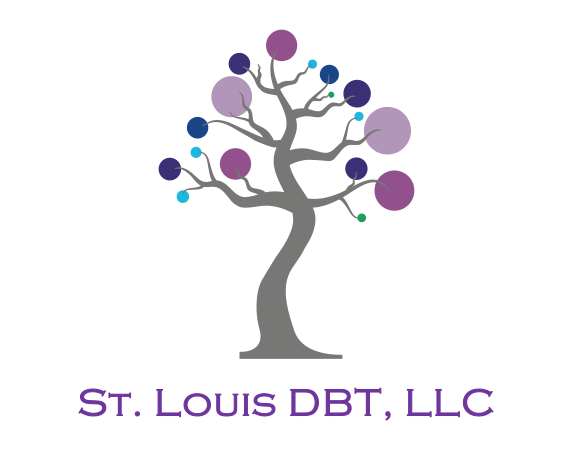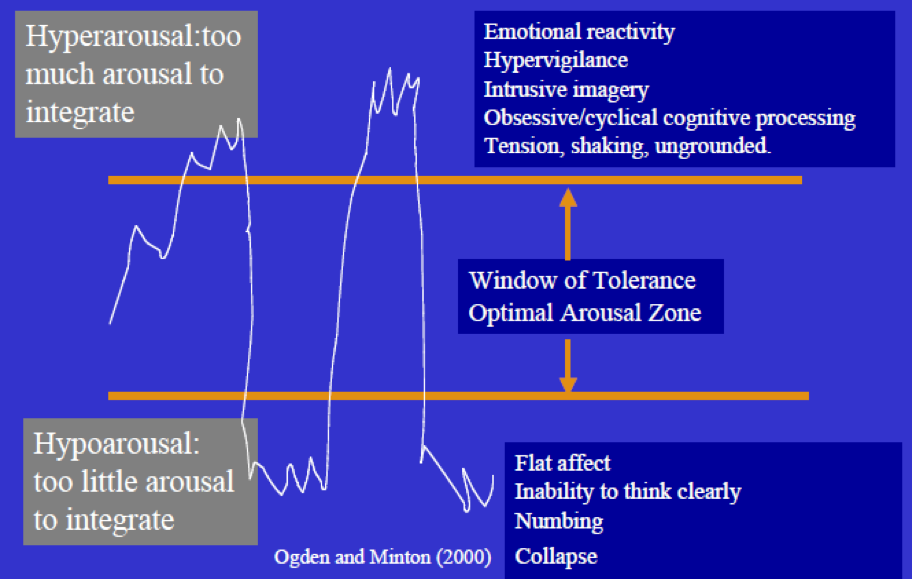Tolerating Overwhelming Emotions
Tolerating Overwhelming Emotions
In 1884, William James wrote an article,What is an Emotion? Scientists are still debating this question today. As clinicians, however, most of us would describe an emotion as a natural instinctive state of mind triggered by circumstances, mood or relationships, or something similar.
Emotion is a relatively recent concept. The English word emotion derives from the 16thcentury French word émotion used to describe mental agitation. Before the word was introduced into the English language, people used words such as appetites, passions, affections or sentiments. Besides being a relatively recent concept, emotion is culturally-based and some languages do not have an equivalent word to this day.
We see this confusion in our clients as well. Our clients (and some of us therapists) confuse emotions with thoughts, rumination or even the facts of a situation. They say, “He made me angry” rather than seeing emotions as a natural instinctive state of mind. They believe emotions are bad or a weakness. They judge themselves for having emotions. Saying someone is emotional is an epithet.
Emotions Are Not Permanent
In therapy, most of therapists tell our clients emotions are valid because we feel them. They are an instinctive state of mind. Everyone has emotions. Most of the time, emotions come and go in fleeting seconds. For example, we wake up feeling lonely, wondering if anyone anywhere cares about you. In this “simple” situation, you check the facts. You go through a list of friends and family who care about you. You use the opposite emotion skill, transforming loneliness into feeling loved and the emotion passes.
Sometimes, you might discover loneliness is appropriate when you check the facts. If you realize you’ve been working too many hours and haven’t seen anything but your computer screen for two weeks, you problem solve. You might decide to text a friend about having lunch or call your brother. If you wake up lonely after moving to a new city where you don’t know anyone, you problem solve. You might go to a MeetUp or join a neighborhood association to meet people.
Window of Tolerance
Other times, however, emotions become overwhelming and make our clients miserable. Clients become miserable when they are outside of their window of tolerance or on a roller-coaster between hyper and hypo arousal (see below).
Sometimes emotions are overwhelming because the circumstances, mood or relationship issue is so powerful. When a loved one dies, your client feels overwhelming grief. In time, the grief diminishes. Other times, the intensity of the emotion is greater than the trigger warrants (e.g., a child spills a glass of milk and mom goes into a rage). Most of the time, our client’s emotions are complex. Story-telling, over-interpretation and ruminative thoughts trigger an overwhelming emotional response (and vice versa).
An Example
We hear stories quite often from clients who tells us about walking into a room where they believes everyone is staring at them. She feels self-conscious. She describes feelings of fear of being judged, maybe twinges of paranoia. She may even feel guilt or shame because someone might see her worst secrets and talk about her failings behind her back. Instead of letting the emotions go, the emotions grow stronger over time. She ruminates, judges herself and changes her behaviors to protect herself from feeling her feelings, fearful her emotions could overcome her ability to cope. She becomes isolated, afraid not only to go into a room of strangers but also the grocery store, restaurants and big box stores, maybe even to go to family reunions and friends’ homes. She is overwhelmed and miserable.
A Vicious Circle of Avoidance
This client is a classic example of the avoidance paradigm (below). The problem behavior is avoiding triggers, avoiding people and places. In her case, avoidance brings rumination, which leads to more emotion, guilt & shame, which increases her negative emotions. Avoidance becomes self-perpetuating and escalating the more she avoids the triggers. As another therapist says, “A big part of the struggle is that ruminating is just easier than facing and tolerating the cues. It might not feel good, but it sure is familiar, and doesn’t require a lot of creativity or energy to stay in it. Yet, this is a myth, because the long-term drain on our energy as we ruminate on our emotions is equivalent to trying to get out of quicksand.” So what skills might help?
The solution to avoidance is learning to tolerate the distress, facing her fears and going to places where she is triggered in spite of the distress. The advantage of learning to tolerate distress is that it builds mastery and building mastery is self-perpetuating just as experiencing negative emotions is self-perpetuating.
Radical Acceptance
One challenge is to accept that her feelings are just emotions. They happen. They do not define who she is. They are neither good nor bad; they are not permanent but will pass. Coming to this acceptance hinges on radical acceptance and a willingness to turn the mind.
Once-and-for-all radical acceptance of overwhelming emotions is not realistic. It’s not like radically accepting your brother-in-law is annoying. In the beginning, she will get glimpses. At these times, she will say to herself “oh, an emotion.” Over time (sometimes years), glimpses will become more frequent and last longer. In these moments, she can begin to observe her emotions, being curious about them and their effect on thoughts and behaviors without triggering herself.
Even then, she can radically accept that emotions are just emotions one session and then next session she may be as overwhelmed as ever. This is where turning the mind comes in. It has four steps.
Observe that you are no longer accepting emotions are “just” emotions
Make an inner commitment to accept whatever emotions come
Do it again, over and over
Develop a plan for catching yourself when you drift out of acceptance
Check the Facts
Check the facts is also an important skill. Challenged to check the facts, the client may be willing to identify alternative scenarios that explain the situation. They are looking beyond her at a holiday display or sirens outside. They are looking at her, admiring her clothes, makeup and hair. We can ask her all/nothing thinking. Is everyone looking at her or just some or a few people? When people talk among themselves, how does she know they are talking about her? Could they be talking about their children, their busy day or what they are making for dinner?
If the emotion is possibly justified, you could suggest they are really looking at her but it’s because of her purple hair, an unusual haircut and provocative clothing. That doesn’t mean they are malicious or judging, as likely they are just curious. You could help her use problem solving, wearing different makeup and clothes to the store or engaging people who are curious in conversation. You could point out it says more about them than it does about her if they are judging or gossiping.
Pros and Cons
When she notices the urge to avoid a place or group of people, pros and cons can help. This skill involvescomparing the advantages and disadvantages of different options. While looking at pros and cons seems intuitively obvious to most of us, it isn’t obvious to our clients in the heat of the moment. Here are the steps:
Describe the problem behavior
Examine the advantages and disadvantages of the problem behavior (e.g., what are the advantages and disadvantages of avoiding people/places).
Consider short- and long-term consequences
Identify a complete list of urges and consider pros and cons for each urge. Urges may include panic, avoiding the situation, going to the store at midnight, asking a neighbor to pick up groceries at the store). While some of these may be adaptive in the short term, the long-term consequences perpetuate the negative emotions.
Rehearse pros and cons multiple times (e.g., role playing, visualization)
Say “No” to problem urges, that is, those not in client’s self-interest in the short or long term.
Opposite Action
Opposite action hinges on using mindfulness skills to notice and observe what is happening and other distress tolerance skills. It is not easy because the urges to avoid are so strong when emotions are overwhelming. This client’s problem behavior is avoiding people/places. The opposite action requires her to face her fear and go to the store or gathering of friends in spite of her fears. The situation may necessitate incorporating Prolonged Exposure protocols incorporated into DBT. If a client’s problem behavior is drinking to temporarily alleviate the distress, then choosing not to drink in response to triggers is the opposite action. Like going to the store, this may require incremental steps (e.g., becoming aware of the urge, tracking the frequency of the urge, identifying reasonable options, etc.)
Combinations of Skills
Except rarely, no single skill is sufficient by itself. Rather, it takes a combination of skills. Typically, some level of mindfulness skills comes first because we can’t change what we don’t notice. Sometimes, we have to start with just talking about what emotions are, how they present and naming them, especially for clients who are fearful the emotions will never stop if they allow themselves to feel them at all. A client doesn’t have to be “proficient” at mindfulness; she just needs to be able to notice. What skill(s) come next depends on the situation. Rather than tackling the most complex, difficult problem first, it’s generally more productive to start with a situation that is more straightforward, comparatively easy. Gradually moving from easier to more difficult enables the client to develop some sense of familiarity with the skills and mastery over their problems before tackling the more challenging, complex areas of avoiding emotions.
Sandra Miller, MSW, LCSW and sometimes blogger, is one of five therapists who see clients at St. Louis DBT, LLC. She is currently taking referrals for new clients. Learn more about St. Louis DBT.


